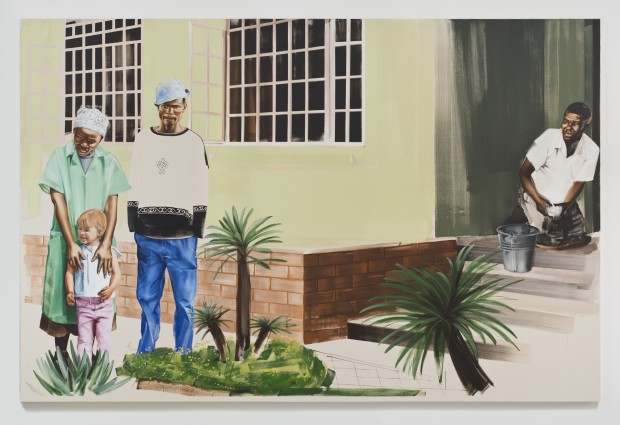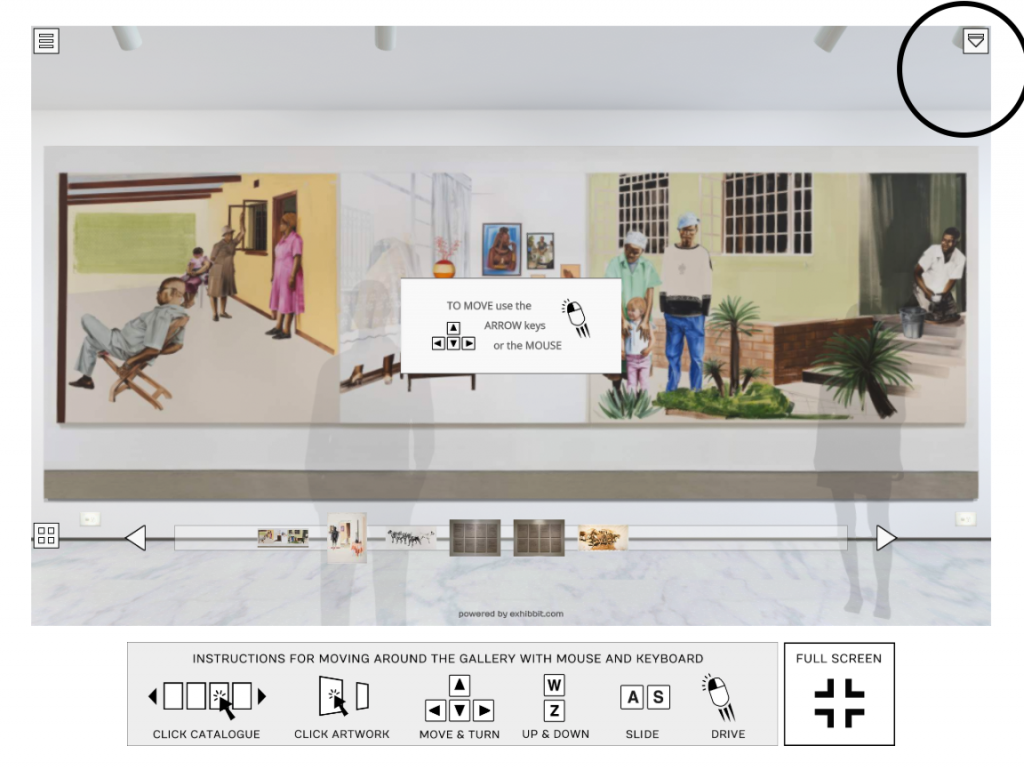Due to COVID-19 protocols, the physical exhibition is currently closed, but there is a virtual exhibition here.
In a collection of art informed by Western figurative painting and the values our culture unconsciously ascribes to such works, artist Meleko Mokgosi examines formal and informal forms of resistance. In this context, resistance is defined as any instance where a subject rejects and refuses to yield to the oppression of her spirit. Where formal resistance takes aim at the state and institutional forces, informal resistance encompasses everyday acts, both unconscious and conscious.
Mokgosi’s paintings notably confront the politics and histories of representation. From a Eurocentric vantage point, black figures are almost always interpreted as representing difference. In Acts of Resistance, Mokgosi compels viewers to give his subjects more complex consideration. The artist presents figures whose beautiful attributes, emotional bearing, inter-relationships, and geographically-specific contexts reject generalizing categories and marginalizing reactions.
Born in Francistown, Botswana, Meleko Mokgosi is an artist, assistant professor of practice at New York University, and co-director of the Interdisciplinary Art and Theory Program. He received his BA from Williams College, participated in the Whitney Museum of American Art’s Independent Study Program, and received his MFA from UCLA. By working across the fields of history painting, cinema, psychoanalysis, and post-colonial theory, Mokgosi creates large-scale project-based installations that interrogate narrative tropes and the fundamental models for the inscription and transmission of history.
Image credit: Meleko Mokgosi, Pax Kaffraria: Graase-Mans, panel 3. 2010-14. Oil and charcoal on canvas, 96 x 348 inches. Courtesy of the Institute of Contemporary Art, Boston.
See the virtual exhibition by using this link: https://publish.exhibbit.com/gallery/954422563/marble-gallery-15813/
Instructions for navigating the exhibit below. Make sure you click the button in the upper right hand corner (in the circle) to read about each work.



